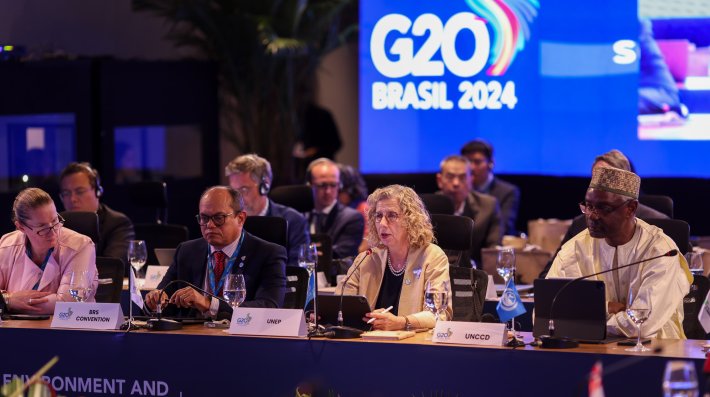Speech prepared for delivery at the opening of the World Circular Economy Forum: Rebooting the economy with circular solutions.
Firstly, let me thank the Finnish Innovation Fund, Sitra, in collaboration with the Canadian government and other partners, for keeping the conversation alive in these difficult times. The circular economy will be crucial to recovering better from the COVID-19 pandemic.
The impact of the pandemic is huge, with millions of deaths, illnesses and job losses. But we must remember it is part of the three planetary crises we are facing: the climate crisis, the biodiversity and nature crisis, and pollution and waste crisis. These three crises, caused by our unsustainable consumption and production, are threatening human health, prosperity and equity.
Scaling up circularity and sustainable consumption and production is essential to address the three crises.
The extraction and processing of resources causes half of global greenhouse gas emissions and much of biodiversity loss and water stress, yet natural resource extraction is predicted to double from 92 to 190 billion tonnes by 2060.
Studies show that the world is only 8.6 per cent circular. While this is disappointing, it also means there is huge space for circularity and sustainable consumption and production to bring rapid and extensive gains.
As part of moving forward in a post-COVID world, climate ambitions towards a 1.5-degree world must be enhanced, not dampened. Circular approaches provide opportunities to enhance Nationally-Determined Contribution (NDC) ambition. We must work with countries systematically to make this happen.
But how specifically do we deliver increased ambition? We just heard from Frans Timmermans on the European Union’s commendable efforts on circularity, which are starting to turn economies around. Let me offer up a few additional suggestions and examples, which can all be implemented as part of COVID-19 recovery and beyond.
Firstly, we need the right policies and incentives in place.
Here I refer to policies that incentivize intelligent design for circularity and extended product life, and establish infrastructure for waste management and recycling.
We are seeing such policies growing. In Nigeria, UNEP is working with the government on Extended Producer Responsibility legislation to increase recycling rates on the 880,000 tonnes of e-waste it generates each year. Or look at Colombia, the first Latin American country with a national circular economy strategy, which targets 17.9 per cent recycling and re-use by 2030.
Such approaches and ambition have to become the norm, not the exception.
Secondly, business and finance must step up.
Businesses and investors should not wait for legislation to act, if only because destroying the natural world will ultimately decimate their bottom lines. Again, there is some progress. Signatories to the New Plastics Economy Global Commitment represent over 20 per cent of plastic packaging used globally. Over 200 businesses are on board. The commitments of three major companies alone to reduce virgin plastic use adds up to reducing CO2 emissions by eight million tonnes every year by 2025. On the finance front, the Italian bank Intesa San Paolo is funding projects and businesses under a Euro 5 billion credit facility to support the circular economy transition.
We need more commitments, and accelerated action on those already made.
Thirdly, we must reach consumers with new technology.
Embracing digitalization for collaboration, innovation and education is the best way to increase the adoption and impact of sustainable lifestyles.
There are apps that allow people to exchange used items, buy soon-to-expire food cheaply, share rides and so much more. For example, many platforms in North America have reduced food waste by connecting consumers with supermarkets and restaurants who have surplus food. These platforms have redistributed tens of millions of ingredients and meals.
New technologies can harness the energy of tech-savvy youth keen to be part of the solution to environmental challenges. We must take advantage of this opportunity.
Let me close by saying that circularity and sustainable consumption and production are essential to delivering on every single multilateral agreement, from the Sustainable Development Goals (SDGs) to the Paris Agreement and beyond. Because it is in turning our unsustainable consumption and production around that we can tackle the three planetary crises. The climate crisis, the nature crisis and the pollution and waste crisis. We all have the power to contribute to the transition. Let’s just do it.
Thank you.
Inger Andersen
Executive Director
























